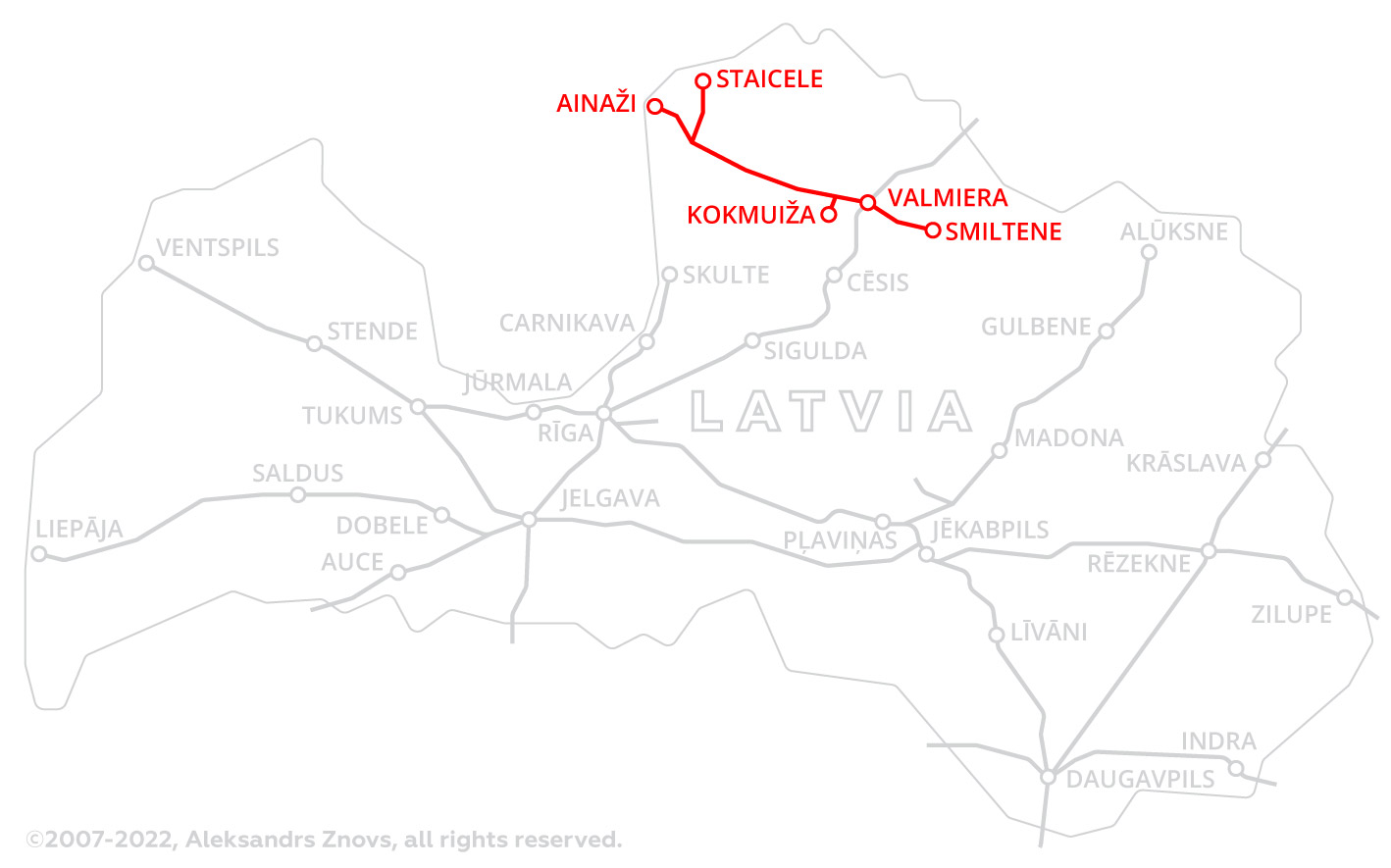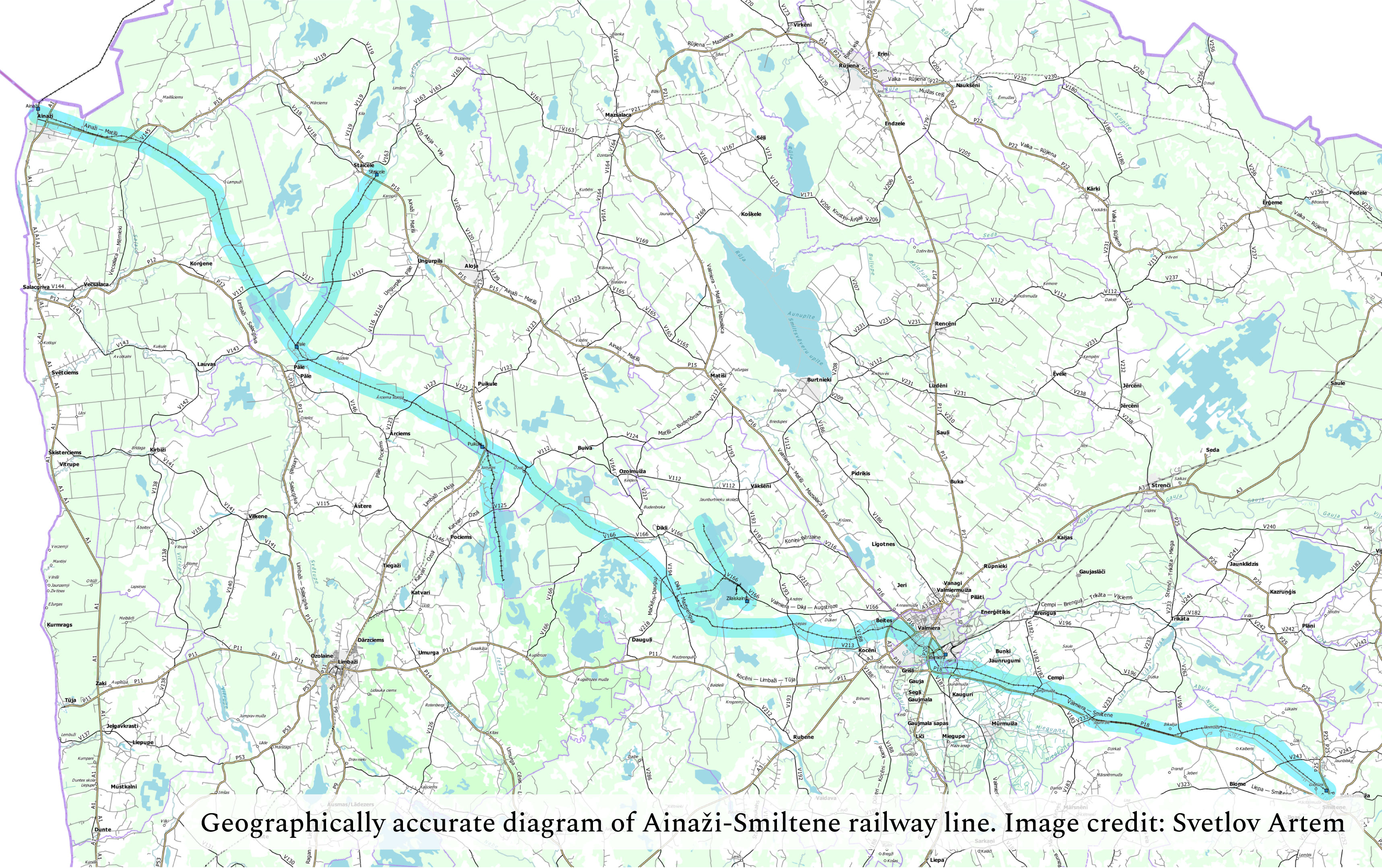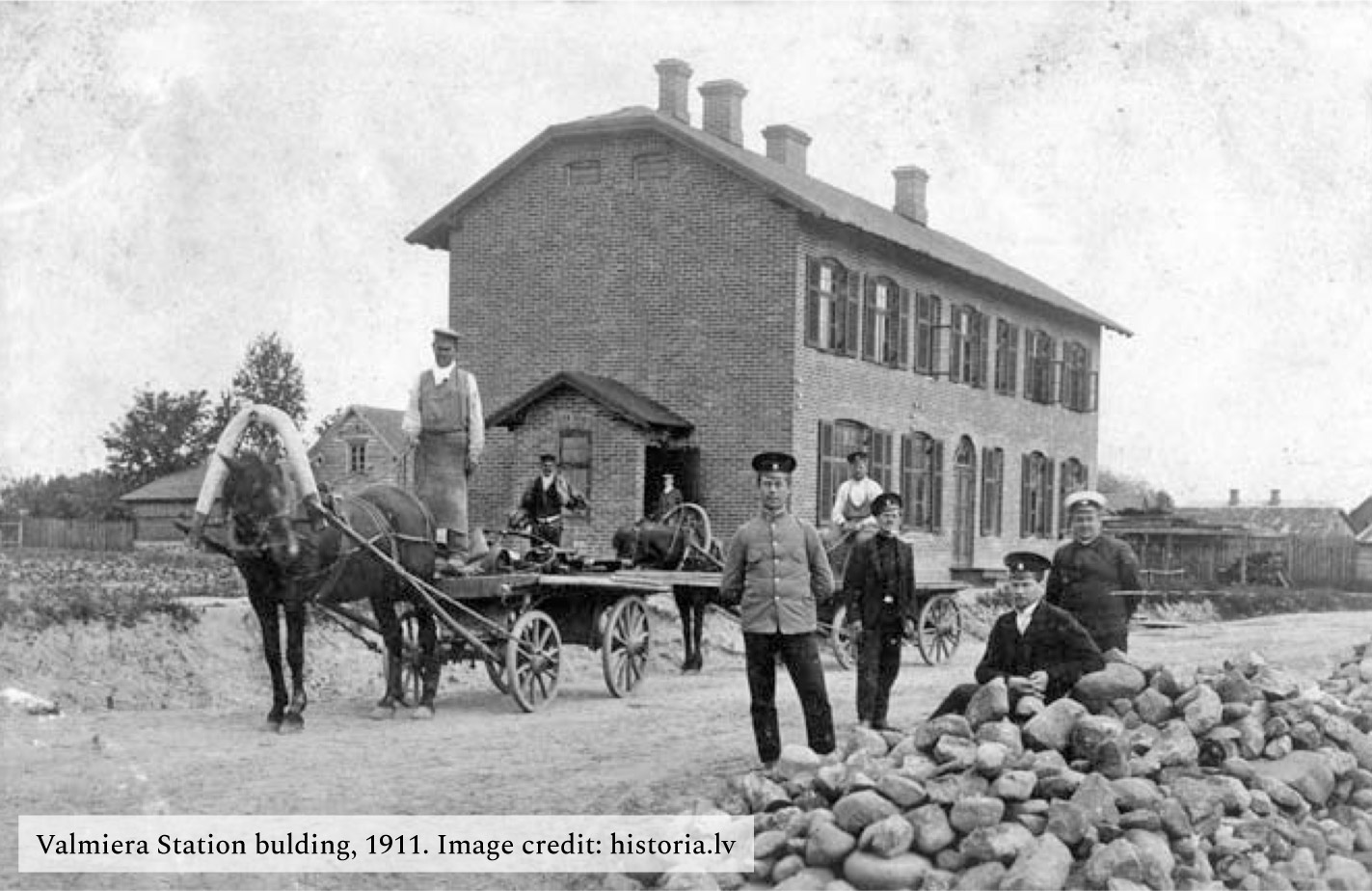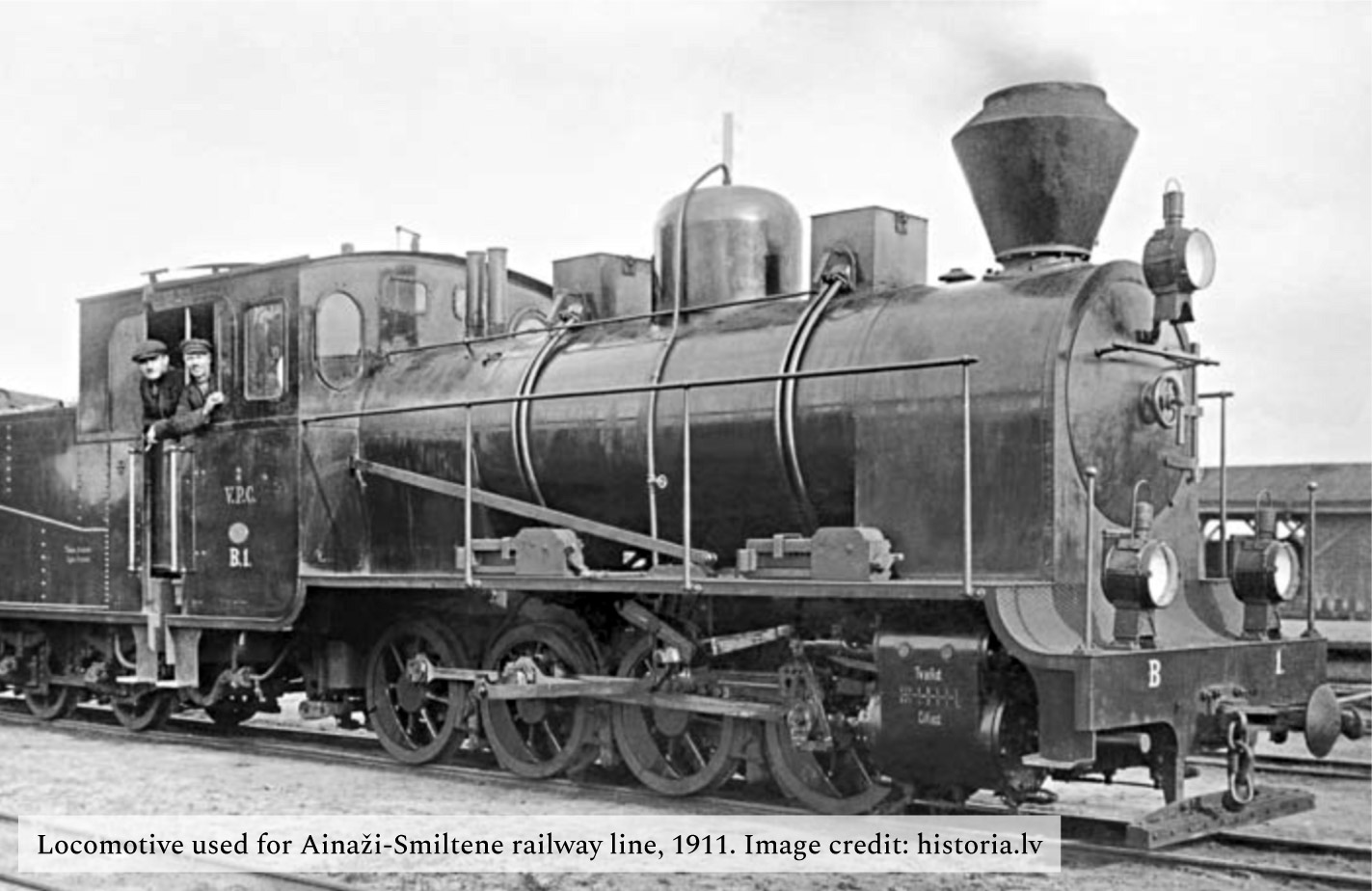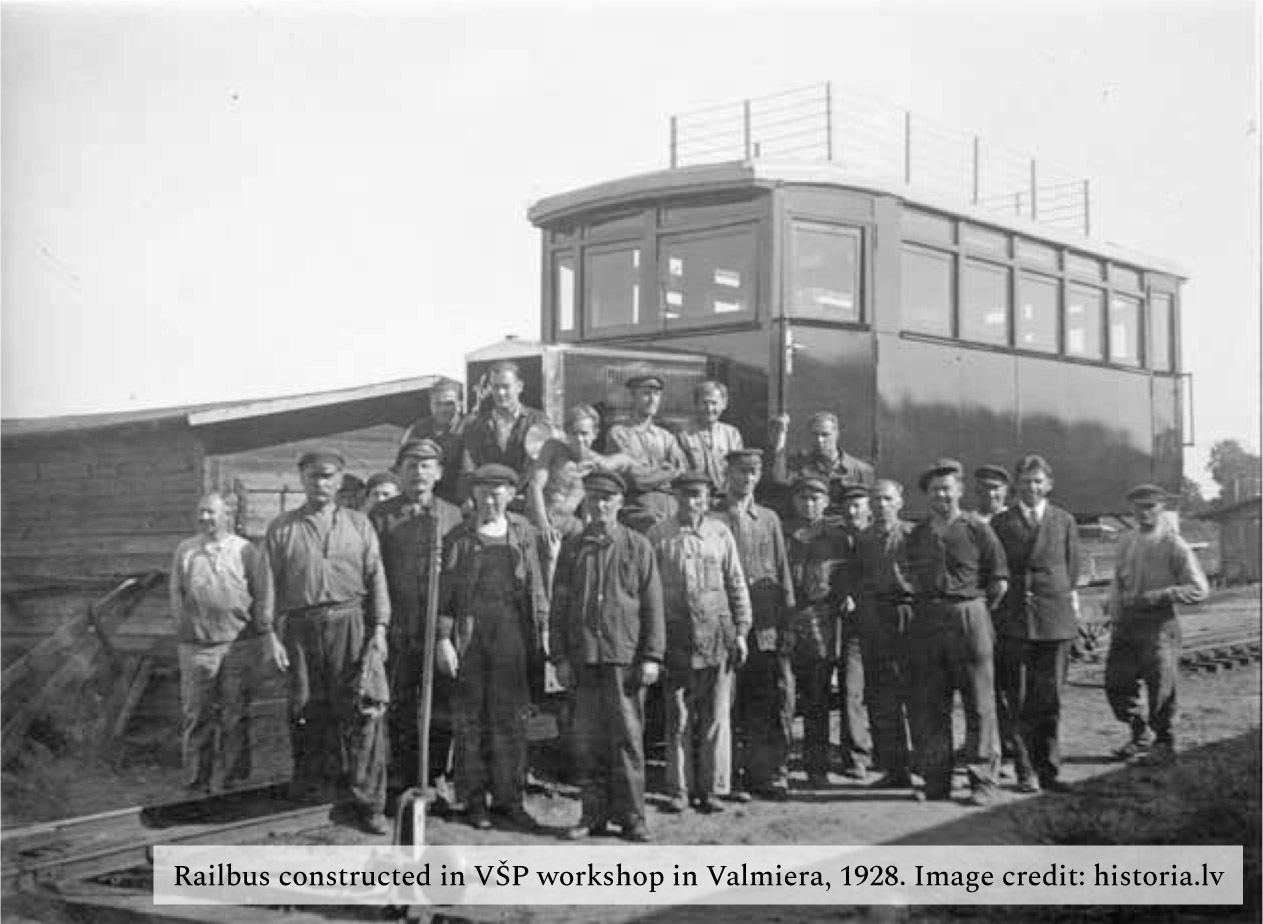Briefly about the Line
Railway line: Ainaži-Valmiera-Smiltene, Latvia
Gauge standard: 750 mm
Length (with branches): 127 km
Stations: 21
Status: closed, dismantled
Opened: 1912
Closed: 2002
Traffic type: passenger, freight
The Beginning
The Valmiera Narrow Gauge Access Road (original Latvian name: Valmieras Šaursliežu Pievedceļa sabiedrība or VŠP) was founded in 1902 by the nobles of the Vidzeme Region of Latvia. Additionally, the Staicele Paper Mill and Kocēni Beer Brewery announced their readiness to co-finance the construction of the railway proposed by the Smiltene Manor owner, traffic engineer count Pauls Līvens (German name: Paul von Lieven, 1875-1963).
Timeline of First Steps
1908 – Beginning of railway line design works, by Paul von Lieven
1910 – Beginning of construction works
14th August 1911 – Smiltene-Valmiera line section was officially opened
September 1911 – Station building in Valmiera opened
1st October 1911 – Valmiera-Puikule line section was opened
November 1911 – Opening of Puikule-Pāle line section
12th August 1912 – The grand opening of the entire railway line
1913 – Opening of Kokmuiža Brewery access line
1913 – Opening of Staicele Paper Mill branch line
History
The line had an intersection with Riga-Tallinn/Pskov standard gauge railway line right at the Valmiera Station. As both stations were located next to each other, for the higher passenger comfort train departure times of the Smiltene-Ainaži line were adjusted to the Riga-Pskov train schedule. From Smiltene till Valmiera the train took a 1,5-2 h, but from Valmiera to the seaport Ainaži – almost five hours. The line was mainly used for passenger transportation, as well as for carrying various goods such as firewood, stones, coal, fertilizers, butter and potatoes.
In 1919, when the struggle for freedom of Latvia took place, the Bolsheviks, during the retreat blew up the bridge over the Gauja River, near the town of Valmiera. The traffic on the Valmiera-Ainaži section was ceased for a short time.
Although, after the end of hostilities, part of the locomotives and other rolling stock units disappeared. With the remaining four original locomotives, the national railway company Latvijas Dzelzceļi began the use of line again. In 1924 the old owner VŠP took the line back.
The rolling stock of the enterprise consisted of 6 locomotives, 11 passenger cars with 64 seats each, 2 baggage, 28 covered freight cars.
In 1928, in the city of Valmiera, in VŠP maintenance workshop a special passenger motor railcar was built. The railcar was divided into smokers/nonsmokers sections, it had 34 soft seats and a special compartment for luggage. The car body was made of high-quality oak.
At the end of World War II, in the fall of 1944, during the retreat, the forces of Wehrmacht forces blew up many station buildings, most of them in the Smiltene-Valmiera section of the line.
During the Soviet era, starting in 1958, the construction of a workers’ settlement of the Zilaiskalns peat factory began, as well as the construction of a railway line connecting the railway line with a peat processing workshop. This branch was the last to close. In addition, until the 70s of the last century, the main branch of the railway line was used mainly for the transportation of goods for the national economy.
Interesting Facts
When the first section of the Ainaži-Smiltene railway line was opened, there were no passenger cars yet, so passengers were transported in special freight cars. The first passengers were the participants of the Smiltene Fair.
The troops of the Estonian army actively used the railway line in the battles with the Bolsheviks.
The Sad Ending
The railway line continued its operation during the Soviet occupation of Latvia, but gradually the flow of goods and passenger flow decreased dramatically. As a result, from the beginning of the 70s, the gradual closure of railway sections and the dismantling of tracks began immediately. It continued until 2002 when the last section of Puikule-Dauguli was closed due to the reduced raw material flow to the nearby Zilaiskalns peat factory.
Nowadays
The Ainaži-Smiltene railway line was a part of a formerly existing different track gauge railway network passing through the territory of northern Latvia and southern Estonia. Somewhere on the web, I found information about the interregional project under the name Greenrailways, which offers walking, cycling tours and other activities along the recently closed railway lines. It is not a bad idea to preserve the memories of once existed railway objects. I still hope someday our governments will decide to restore at least a part of the infrastructure and start to use this really beautiful, green rural transport.
Please visit and like my page on Facebook where you can contact me in case of any question or claim mistakes found on the network maps and other content. TransportLab has a Twitter as well, feel free to follow us to stay informed. Thanks.
Title image credit: spoki.lv


